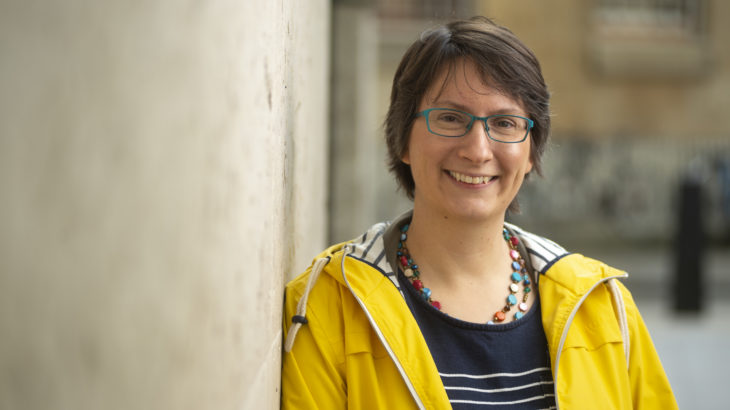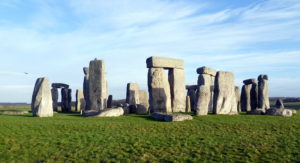
I’m an archaeologist with a specialist interest in the Neolithic and early Bronze Age of the British Isles. Although I rarely get the opportunity to head out into the field with my trowel these days; you are much more likely to find me buried in a museum archive or surrounded by library books!
This blog posts sets out my career so far, why I chose to do a PhD, what my research is about and why it is important.
After degrees in archaeology from Sheffield and Oxford, and a short time working in commercial archaeology, I joined English Heritage in 2005, where I currently work part-time as a Senior Properties Historian. My main role is to research, investigate and write about our historical and archaeological properties to provide information for our visitors. This can range from site interpretation panels to entire exhibitions. I curated the exhibition and was part of the team who developed the interpretation at the new visitor centre at Stonehenge. I’ve also worked on a major interpretation project at Tintagel Castle, and have written a guidebook for Chysauster Ancient Village, both in Cornwall. Currently my work with English Heritage involves curating the temporary exhibition programme at Stonehenge, researching and writing interpretation for other prehistoric sites (including those in the Avebury WHS) and generally being a spokesperson for Stonehenge in the media!
Having the opportunity to work on Stonehenge for a considerable period of time really focused my mind on the aspects of archaeology that I really find fascinating – namely, Neolithic monuments. I was lucky enough to obtain funding from the AHRC through the South West and Wales Doctoral Training Partnership scheme, which enabled me to start my PhD at Cardiff University part-time in 2014. I’m keen to share the results of my research, both through my work at English Heritage, through the BBC New Generation Thinkers scheme and in my role as post-graduate tutor at Cardiff University.

Stonehenge, Wiltshire – perhaps the most iconic prehistoric monument in the world, and a fascinating place to study!
My PhD research focuses on clusters or groups of Neolithic monuments, which are termed ‘monument complexes’, built between 5,700 and 4,500 years ago in Britain and Ireland. I’m looking at why these clusters of monuments exist, and attempting to compare and contrast them. I’m applying a relational approach; trying to look at how people related to their landscapes and the materials around them, and to investigate how power relations might have existed between these things and groups of people. It’s a big project!
There are two aspects relating to monument complexes that I’m exploring – the power of place and the power of time. Place is finding out why these complexes emerge where they did – what is it about these precise locations that attracted people to build there, sometimes returning over thousands of years, to build more monuments? The presence of older monuments attracts people to build more monuments in the same location. These places often have unusual qualities – unpredictable streams that appear and disappear; odd shapes in the land; active sink holes. Chronology is crucial in order to construct narratives as to how individual clusters emerged and developed, but also in comparing what is happening across different places. So my project involves new radiocarbon dating of several monuments in Dorchester, Dorset so that a detailed story of the complex there can be written. There are already some exciting results from these dating projects, which I’m currently writing up for publication.

The archaeology archive at Dorset County Museum in Dorchester. These boxes are full of bones, charcoal and pottery from monuments and sites in the local area, key resources for finding out more about the Neolithic past.
You might think that studying something from such a long time ago is fairly indulgent and perhaps even irrelevant. Neolithic monuments are endlessly fascinating, and they provide an exciting way to engage people with the archaeology of this period. But the deep time of prehistory also provides us with a radical perspective on how society can be organised. When large and complex monuments such as Stonehenge were built, there is little evidence for permanent hierarchies or leadership. And yet these people were able to organise enormous communal building projects, and to communicate and share similar ideas over large parts of the British Isles. In addition, by investigating how people paid attention to, and related to, their environment and their landscape in the past, studying the Neolithic period can also help to see ourselves as part of a much larger and longer-term picture. In knowing more about these relationships in the past, we can shift away from our human-centred modern western philosophies and begin to see our relationship with the planet and the resources it affords us in a new way.
Categorised in: Student Blogs